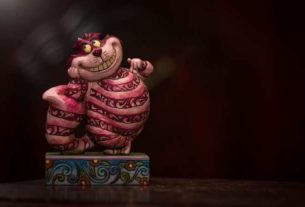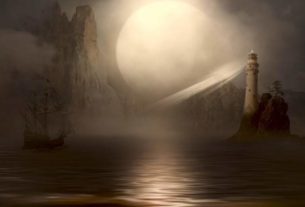Gary Larson, the American cartoonist and his internationally syndicated cartoon series ‘The Far Side’ – syndicated in more than 1900 newspapers – are both legendary in the annals of newspaper cartoon arena. Collected into more than twenty books, Larson’s works, which got translated into seventeen languages, has sold about forty-five million copies worldwide. With a distinctive style of illustration, creatively loaded with surrealistic humor, his single-panel cartoon strips evoke laughter by inspecting the world through a fresh perspective and finding inspiration from social and natural events and scenarios.
“The Far Side Gallery” is the first volume of a compilation of his comic strips, which were published from 1982 to 1984. Within these cartoon panels the reader can witness and enjoy portrayals of curious family scenes, social events, time warps into pre-historic worlds, human & animal relationships, observations of nature, clever role-reversals – where roles of ‘humans and animals’ or ‘humans and monsters’ are switched – with each panel evoking laughter by provoking the thought process.
Gary Larson & Far Side
Gary Larson was born in Washington in 1950 and started cartooning during the mid 70s. He evolved into a serious cartoonist when in 1980 some of his panels were accepted by “San Francisco Chronicle”; it was the birth of “The Far Side” series. Larson attributes the “morbid sense of humor” that his cartoon panels carry to his own family and the pranks that he and his older brother played while growing up. He continued with the series till his retirement in 1995.
The Far Side cartoons are composed on single comic panels – in some cases split in to stamp sized small windows – and makes use of ink strokes for illustrations. Text is presented either as footer captions or as speech bubbles and is often presented in a manner to fuse effortlessly with the illustration. The characters are often illustrated with a distorted, caricature feel and with a fine portrayal of expressions.
One of the recurring themes within these panels are situations which are made out of ‘role-reversals’ between animals, monsters and human beings or scenes in which the artist compare the behavioral attributes of animals to that of humans.
This can be seen in the two panels which I pick up for inspection: In one panel we can witness a mortally scared horse coming out of a movie theater after watching a show of “God Father” and his companion saying “Get a hold of yourself… It was only a movie, for crying out loud”. In another panel we see two scared monsters under a bed making this comment “I’ve got it again, Larry… an eerie feeling like there’s something on top of the bed. ”
The art within the panels of ‘The far side’
The art and the text perfectly combines within these panels to create the perfect rendering of the yarn it narrates. The way in which the artist adds layers of meaning and details through some effortless & frugal pen strokes is truly amazing. The detailing in the art is very deep as the artist gives special care to even the microscopic aspects of the scene, which he depicts.
These cartoon panels travels between the realms of ‘the real & the unreal’ and evokes humor even from the portrayal of macabre. Larson’s eye for seeing the world through an unsullied perspective and coming up with illustrations that mock some of our forbidden views, while drenching the panels with dark humor is hugely refreshing to receive. The way in which he paints anthropomorphic creatures in his illustrations for representing his visions never feels exaggerated and connects quiet easily with the viewer.
Larson’s background in biology can be seen as a motivation behind the recurring illustrations of plant and animal life within these cartoon panes for conveying his views. He creates a warped montage staging animals, plants, insects and even monsters to generate strange but incredibly funny comic panels.
Some of the cartoon panels from Larson were controversial as they represented some of the concepts that were often thought of as taboos, but they had a cult following. This anthology, which brings his comic strips initially published as three smaller collections – The Far Side, Beyond the Far Side & In Search of the Far Side – can inspire and delight art & cartoon lovers. These cartoon strips are definite monuments in the pop culture scene. It is no wonder that, with his homage to natural history through his illustrations, which feature animal behaviors and studies on the evolution and extinction, a selection of his works were exhibited at Smithsonian Institution’s National Museum of Natural History.
Written By : Pramod S Nair





